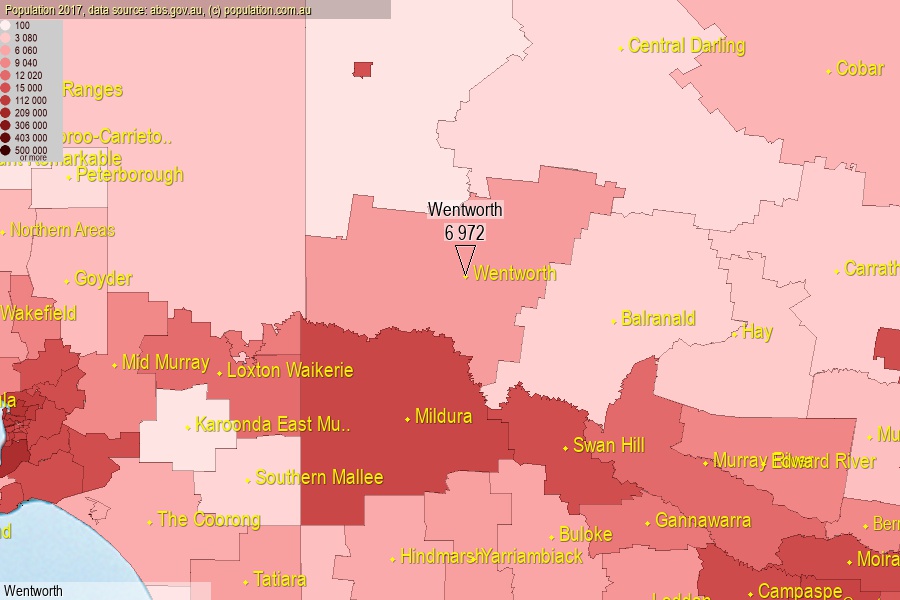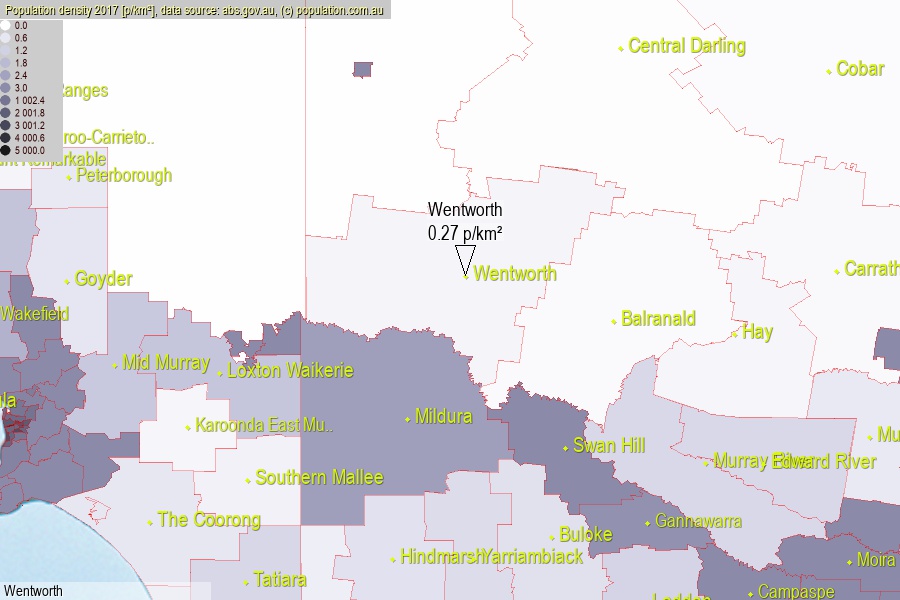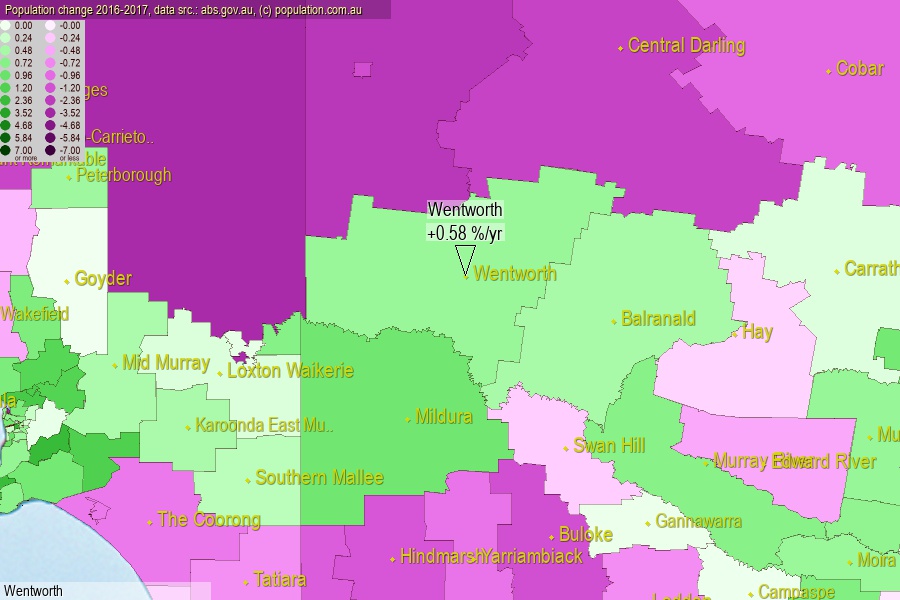 population.com.au
population.com.auLast official estimated population of Wentworth Area (as Local Government Area) was 6 972 people (on 2017-06-30)[2]. This was 0.03% of total Australian population and 0.088% of NSW population. Area of Wentworth is 26 256.20 km², in this year population density was 0.27 p/km² . If population growth rate would be same as in period 2016-2017 (+0.58%/yr), Wentworth population in 2025 would be 7 300. [0]



Click to enlarge. Wentworth is located in the center of the images.
Population [people], population density [p./km²] and population change [%/year] [2]
[1996-2001] -0.11 %/Y
[2001-2002] -1.09 %/Y
[2002-2003] -0.97 %/Y
[2003-2004] -0.90 %/Y
[2004-2005] -0.45 %/Y
[2005-2006] +0.16 %/Y
[2006-2007] +0.53 %/Y
[2007-2008] +0.01 %/Y
[2008-2009] -0.46 %/Y
[2009-2010] -0.32 %/Y
[2010-2011] -1.06 %/Y
[2011-2012] +0.15 %/Y
[2012-2013] +0.01 %/Y
[2013-2014] +0.42 %/Y
[2014-2015] +0.19 %/Y
[2015-2016] +0.61 %/Y
[2016-2017] +0.58 %/Y
[0] Calculated with linear interpolation from officially estimated population
[1] Read more about LGA and Australian Statistical Geography Standard (ASGS) on abs.gov.au
[2] Population data from Australian Bureau of Statistics (Population and density: 2017; change: 2016-2017)
[3] Digital Boundaries: Australian Statistical Geography Standard (ASGS) 2016.